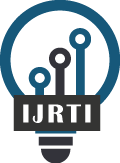|
International Journal for Research Trends and Innovation
International Peer Reviewed & Refereed Journals, Open Access Journal
ISSN Approved Journal No: 2456-3315 | Impact factor: 8.14 | ESTD Year: 2016
Scholarly open access journals, Peer-reviewed, and Refereed Journals, Impact factor 8.14 (Calculate by google scholar and Semantic Scholar | AI-Powered Research Tool) , Multidisciplinary, Monthly, Indexing in all major database & Metadata, Citation Generator, Digital Object Identifier(DOI)
|
Issue: October 2025
Volume 10 | Issue 10
Review Result and Publication of Paper within : 2-3 days
Click Here For more DetailsFor Authors
Forms / Download
Published Issue Details
Editorial Board
Other IMP Links
Facts & Figure
Impact Factor : 8.14
Issue per Year : 12
Volume Published : 10
Issue Published : 113
Article Submitted : 18214
Article Published : 7781
Total Authors : 20568
Total Reviewer : 749
Total Countries : 142
Indexing Partner
Licence
This work is licensed under a Creative Commons Attribution-NonCommercial 4.0 International License







|
Published Paper Details
|
|
| Paper Title: | Conceptual Model for Piezoelectric Energy Harvesting in Railway Infrastructure: A Sustainable Solution for Renewable Energy in Transit Stations |
| Authors Name: | Abhishek Bandyopadhyay |
| Download E-Certificate: | Download |
| Author Reg. ID: |
IJRTI_200154
|
| Published Paper Id: | IJRTI2412076 |
| Published In: | Volume 9 Issue 12, December-2024 |
| DOI: | http://doi.one/10.1729/Journal.43670 |
| Abstract: | Piezoelectricity, or the electricity generated through mechanical stress, can be sustainable for generating renewable energy, especially in high-footfall areas like train stations. Specially designed tiles, also called piezoelectric tiles, are used to generate electricity through the mechanical stress generated through human footfall. Train station platforms lined with piezoelectric tiles are an excellent idea for transforming the stations into better and more sustainable areas with a constant supply of electricity with such tiles. This thesis offers hypothetical models of piezoelectric tiles that use thermo-piezoelectric design to generate energy with human footsteps. Here, three different models have been discussed to ensure better adaptation depending on the budget and location context. In addition to that, the thesis also offers a possible energy harvesting limit by considering the footfalls of the most populated rail stations across the globe(i.e., Shibuya, Frankfurt, Howrah Junction, etc.). It offers detailed information on the daily energy harvesting capacity alongside the cost of installation and upkeep expenditure. It also offers scope for further development through prototype models and further research for better adaptation of the tiles. |
| Keywords: | Piezoelectric Tiles, piezoelectricity, piezoelectricity in railway |
| Cite Article: | "Conceptual Model for Piezoelectric Energy Harvesting in Railway Infrastructure: A Sustainable Solution for Renewable Energy in Transit Stations", International Journal of Science & Engineering Development Research (www.ijrti.org), ISSN:2455-2631, Vol.9, Issue 12, page no.a699-a714, December-2024, Available :http://www.ijrti.org/papers/IJRTI2412076.pdf |
| Downloads: | 000555 |
| ISSN: |
2456-3315 | IMPACT FACTOR: 8.14 Calculated By Google Scholar| ESTD YEAR: 2016 An International Scholarly Open Access Journal, Peer-Reviewed, Refereed Journal Impact Factor 8.14 Calculate by Google Scholar and Semantic Scholar | AI-Powered Research Tool, Multidisciplinary, Monthly, Multilanguage Journal Indexing in All Major Database & Metadata, Citation Generator |
| Publication Details: |
Published Paper ID: IJRTI2412076
Registration ID:200154
Published In: Volume 9 Issue 12, December-2024
DOI (Digital Object Identifier): http://doi.one/10.1729/Journal.43670
Page No: a699-a714 Country: Kolkata, West Bengal, India Research Area: Electrical Engineering Publisher : IJ Publication Published Paper URL : https://www.ijrti.org/viewpaperforall?paper=IJRTI2412076 Published Paper PDF: https://www.ijrti.org/papers/IJRTI2412076 |
| Share Article: | |
|
Click Here to Download This Article |
|
| Article Preview | |
|
|
|
Major Indexing from www.ijrti.org
| Google Scholar | ResearcherID Thomson Reuters | Mendeley : reference manager | Academia.edu |
| arXiv.org : cornell university library | Research Gate | CiteSeerX | DOAJ : Directory of Open Access Journals |
| DRJI | Index Copernicus International | Scribd | DocStoc |
ISSN Details
 |
 |
ISSN: 2456-3315
Impact Factor: 8.14 and ISSN APPROVED,
Journal Starting Year (ESTD) : 2016
DOI (A digital object identifier)
 Providing A digital object identifier by DOI.ONE How to Get DOI? |
Conference
Open Access License Policy
Important Details
Join RMS/Earn 300
WhatsApp
Click Here
Click Here
Indexing Partner |
|||
| Copyright © 2025 - All Rights Reserved - IJRTI | |||






